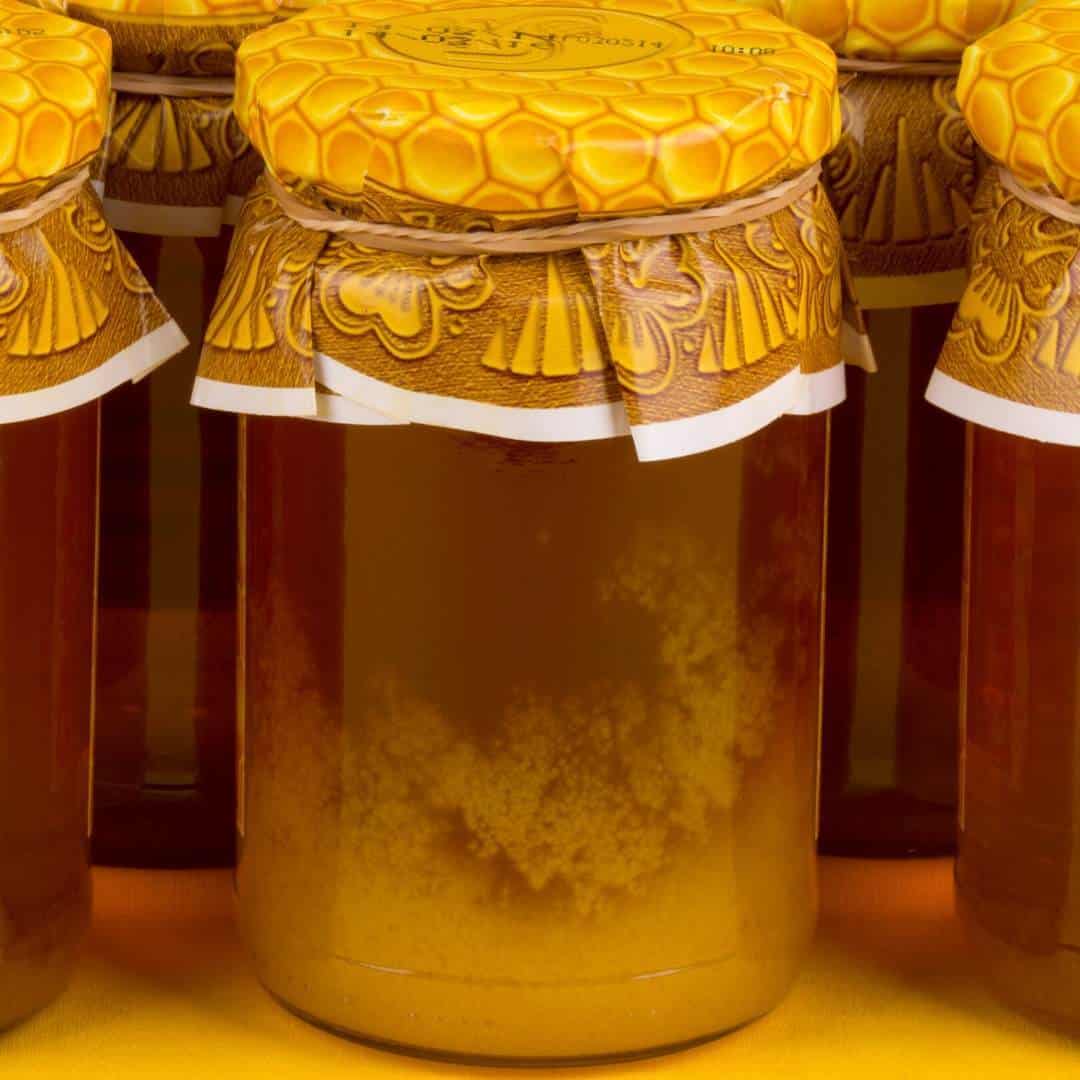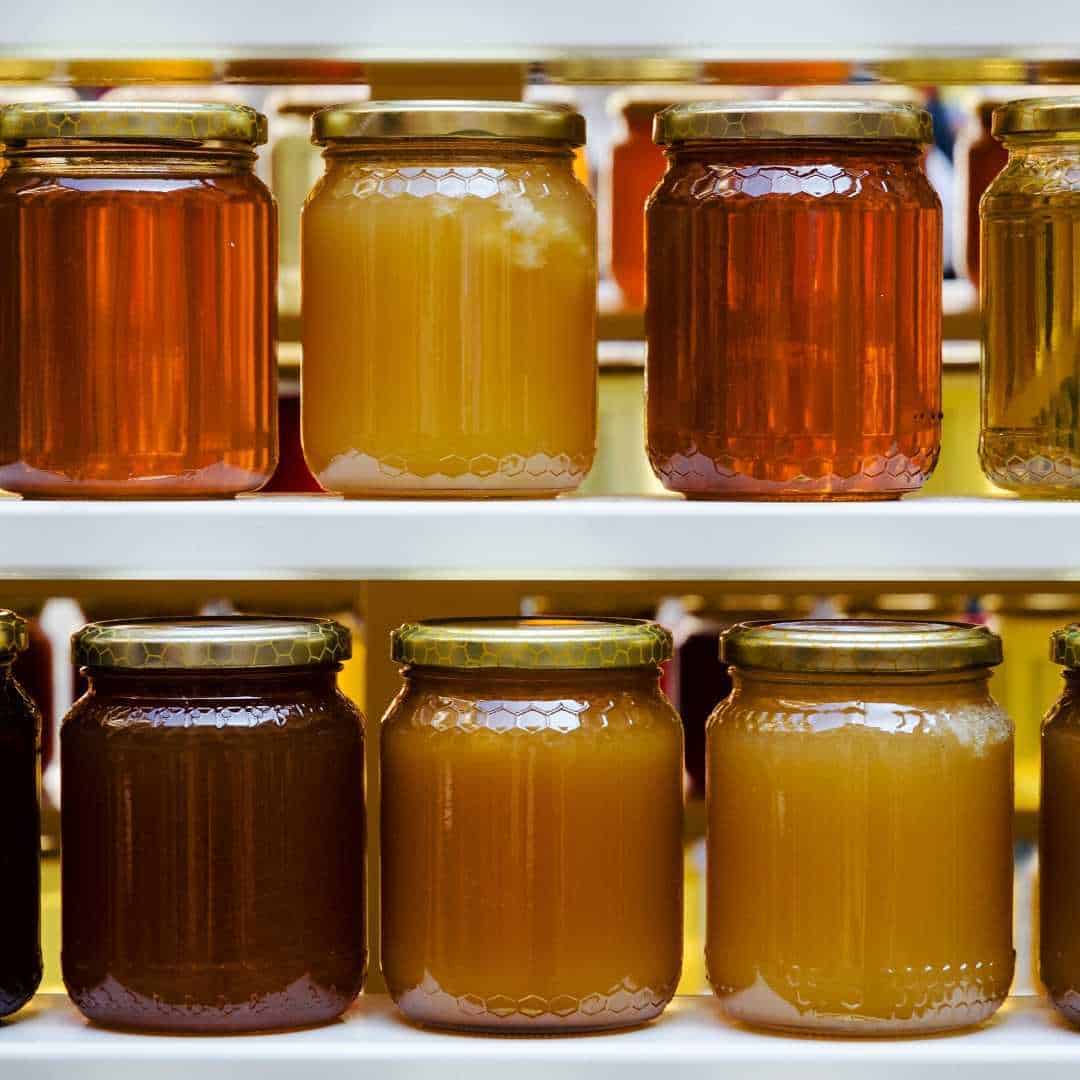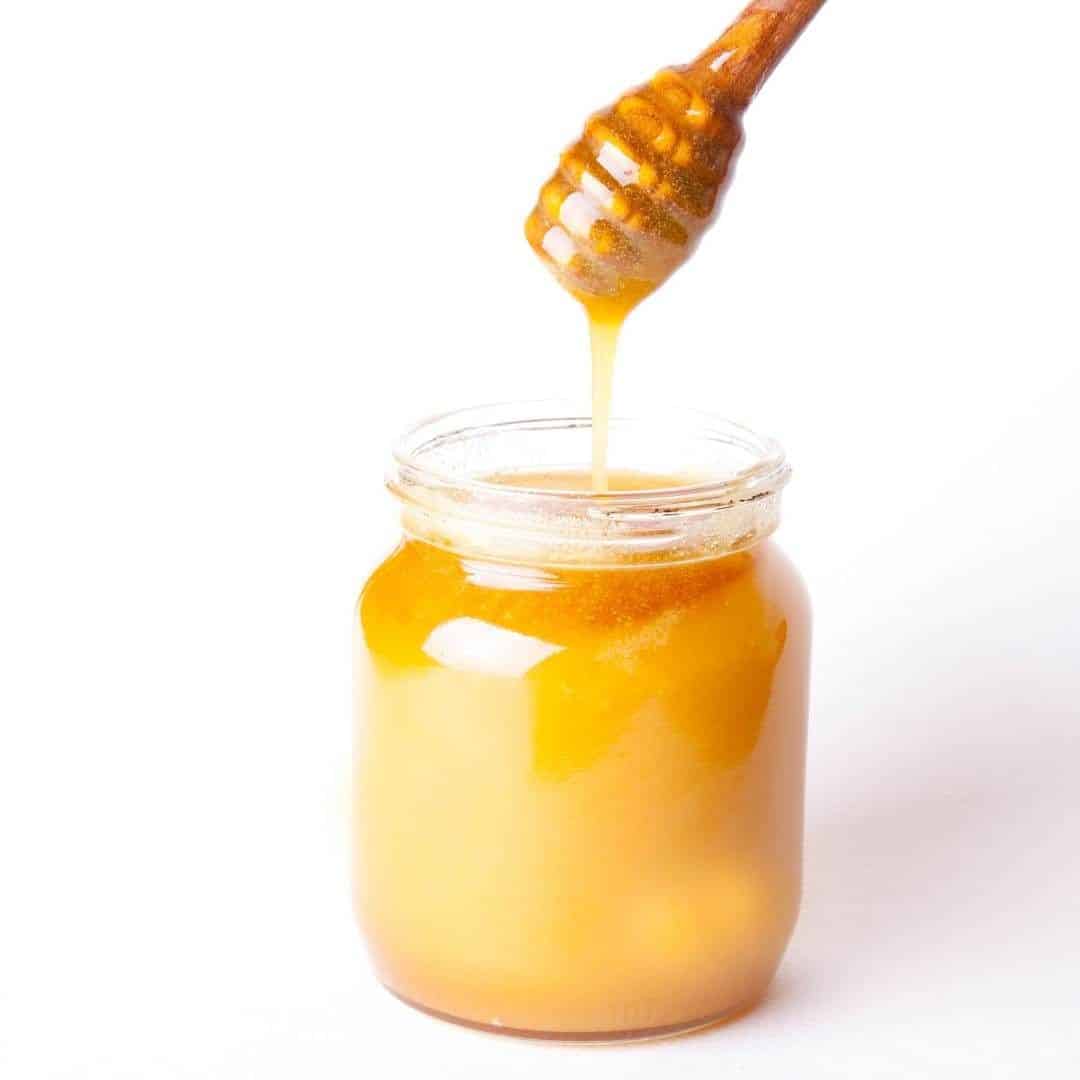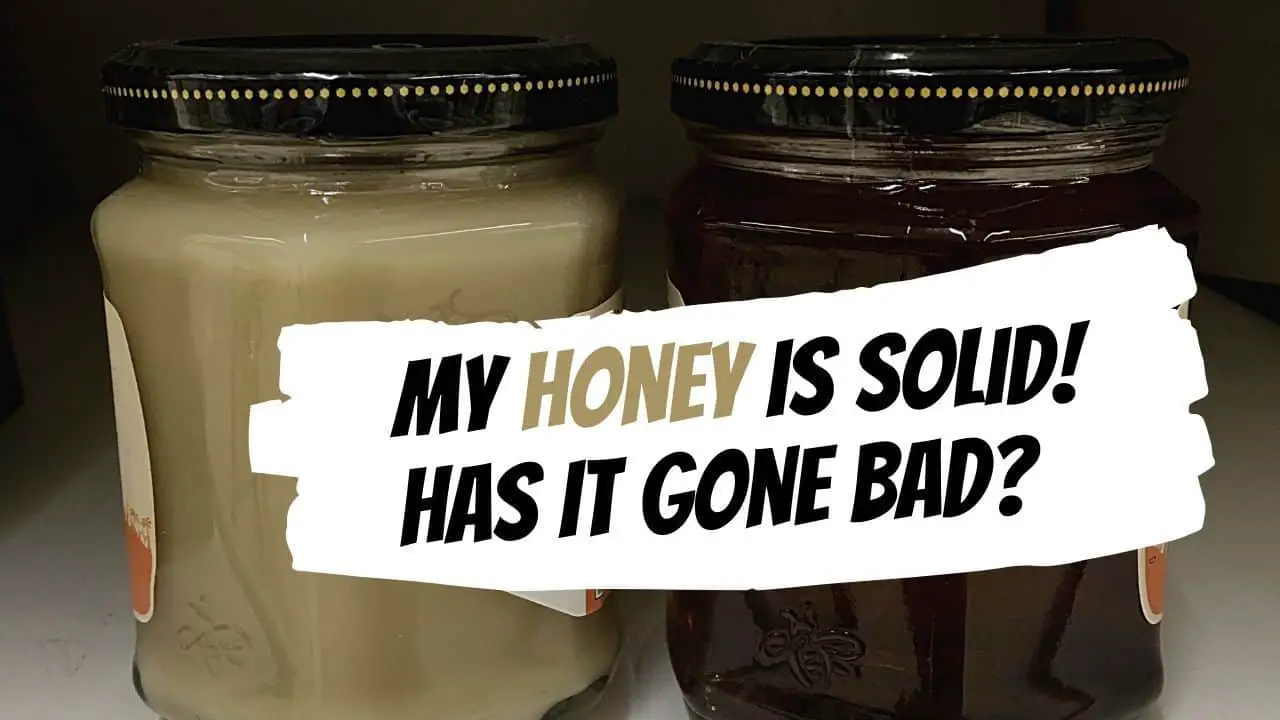Have you ever taken a jar of honey from the shelf and noticed that it is cloudy, and no longer flows smoothly? It may seem almost solid, and the color is more opaque than transparent. That phenomenon is known as crystallization.
This article will discuss what it is and why crystallization happens.

Is Crystallized Honey Bad?

In a word, no. Crystallization is a natural process. Your honey hasn’t gone rotten or spoiled. In fact, it’s the honey’s way of preserving itself. Most raw honey will naturally crystallize over time. Crystallized honey is just as good as liquid one. The only thing that has changed is the texture and its cloudy color. [1]
Properly stored honey, in a sealed container, can last decades. Interesting fact for you – honey has been called the only food that doesn’t go bad. It will, however, crystalize. [2]
Some people prefer honey with very fine crystals. You may see a product in the stores called “creamed honey.” This type of nectar makes an excellent spread for toast or other baked goods. When it becomes semi-solid, beekeepers refer to it as “set honey.”
Why Won’t Some Honey Crystallize?

There are two kinds of honey you are likely to find, raw and regular or commercial honey. Raw honey comes straight from the hive. Beekeepers will typically filter it and remove larger particles, but they do not treat it. Raw nectar will contain natural pollen and enzymes.
Commercial sellers pasteurize honey for several reasons. It kills yeast cells and improves the shelf life of the product. The process of pasteurization removes most of the particles that crystals like to form around. So the granulation process is slowed, and the nectar has a clear, filtered look.
Pasteurization exposes the honey to high heat (170°F or 76°C) for a few seconds or a lower temperature (145°F or 62°C) for 30 minutes. Though pasteurized honey won’t crystalize as quickly, it loses some of the natural properties of raw honey. [3]
Here’s The Science Behind Crystallization
To understand why honey crystalizes, we need to put our lab coats on and dig into the science.
Let’s start with what honey is: honey is a supersaturated sugar solution. It is made up of sugars, water, and other components, including minerals, vitamins, and enzymes. The main ingredients we’ll be looking at are the amount of water, and two of the sugars, fructose, and glucose.
The water in honey is very low compared to the volume of sugar. It has about a 16%-18% moisture content, making it a sugar syrup. Fructose and glucose are both simple sugars, known as monosaccharides. Since honey is a natural product, every batch will contain different amounts of these.
The amount of fructose will be somewhere between 30-44%, and the amount of glucose will be 25-40%. It is the glucose that crystalizes. So, the rate at which honey crystallizes, and how much of it becomes solid, is an indication of how much glucose is in it. [4], [5], [6], [7]
Tiny crystals form in the honey when the glucose separates from the water. The crystallization will be different in different kinds of nectar. Some form tiny, fine crystals all through the honey. Others have big, gritty crystals that sink to the bottom.
The difference is in how much water there is in the nectar. Honey that has a low water content will form more delicate crystals throughout. If the honey has higher water content, the crystals will be larger. In this case, you might have separated layers, with liquid on the top and crystals at the bottom.
Other Factors That Determine How Long It Takes For Honey To Crystallize

The amount of glucose influences the rate at which your honey will crystallize. The ratio of sugars and water in it is up to the bees that produce it and the flowers they use. But, other factors come into play as well.
One of these factors is how your honey is processed. Crystals like to form around things. So if there is a tiny particle in your honey, the crystals start to grow around that particle. Raw nectar contains more particles than filtered, pasteurized ones. There will be small grains of pollen and microscopic pieces of wax in it, for example.
Commercial honey is typically filtered and heated, which will remove those little particles. That means there are fewer things for the crystals to form around, so commercial honey will have far fewer crystals and remain liquid longer.
Though many factors go into how the honey crystallizes, and the speed that it does so, it often occurs after three to six months of storage.
Finding The Perfect Storage Temperature For Your Honey

How you store your honey matters. If you store it in a cold place, like your freezer or refrigerator, crystallization is slowed down. Cold honey will be very thick, and this makes it harder for the glucose crystals to form. However, it is hard to use this way. If you have a large quantity of honey, you can freeze portions of it at a time.
On the other side of the thermometer, glucose crystals also can’t form when the honey is hot. The crystals just melt apart when they start to form. However, if your honey is regularly exposed to high temps, that can change the color and taste. So, keep the jar away from direct sunlight or heat sources like your oven.
Crystallization is most likely to happen when the temperature of the honey is between 52 – 59°F (11 – 15°C). For the best results, store it away from direct light and at room temperature. That will give you the best mix of ready-to-use honey, that maintains its natural properties.
Another trick to keeping your honey from crystallizing.
Keep it in a tightly sealed container. As mentioned, honey crystals form around particles, so keeping dust out of it is essential. A sealed container will also help retain the water ratio. And as I said, the nectar with low amounts of water will crystalize faster.
So, a sealed container will keep the moisture in. Some studies have shown that plastic will, over time, let out some amount of moisture. If possible, stay with glass containers.
How To Decrystallize Safley?

So, what do you do if your jar of honey has crystallized? How can you make it flow again?
The best way is with a small amount of indirect heat. You want to recrystallize it, but if you have raw honey, you want to keep it raw. Too much heat can destroy the unique enzymes and properties that come with raw nectar. It can also hurt the flavor and color of the honey. To avoid overcooking your honey, you will want to keep it below (104°F or 40°C). [9]
The thickness of the honey will change based on temperature. As it gets warmer, it becomes less viscous and thick, and more thin and runny.
To warm honey safely without damaging it, you can use this method below:
The Hot Water Bath
One way to decrystallize your honey is to warm it gently in a hot water bath. Fill a bowl or pot with hot water (but not over 110°F or 43°C) and place your opened jar in the water. Allow the jar to sit in the water for about a half-hour. Stir it every five to ten minutes. Continue this process until the honey is liquid again.
Note, if the honey is in a plastic container, you will want to use warm but not boiling water. Otherwise, the plastic may warp.
By using a hot water bath, you remove the crystals but maintain the properties of the raw honey. Never use direct heat to warm it.
Final Words
Honey is an amazing natural food. It lasts a long time if stored correctly in a sealed container at room temperature, away from direct heat. However, most honey will eventually crystalize unless it has been pasteurized. This is not a problem, as it will retain all of its properties. Simply warm gently, and it will return to its liquid state and be ready to use.
Related Article: Bottled Lemon Juice vs. Fresh Squeezed One – Is There Really A Difference?


I was on the fence about whether or not to buy crystalized honey at the store. I mean, it looked pretty fake. But then I thought, what do I know about honey? Maybe it is supposed to look like that. So I bought it. And it was delicious!
Is your number toll-free?